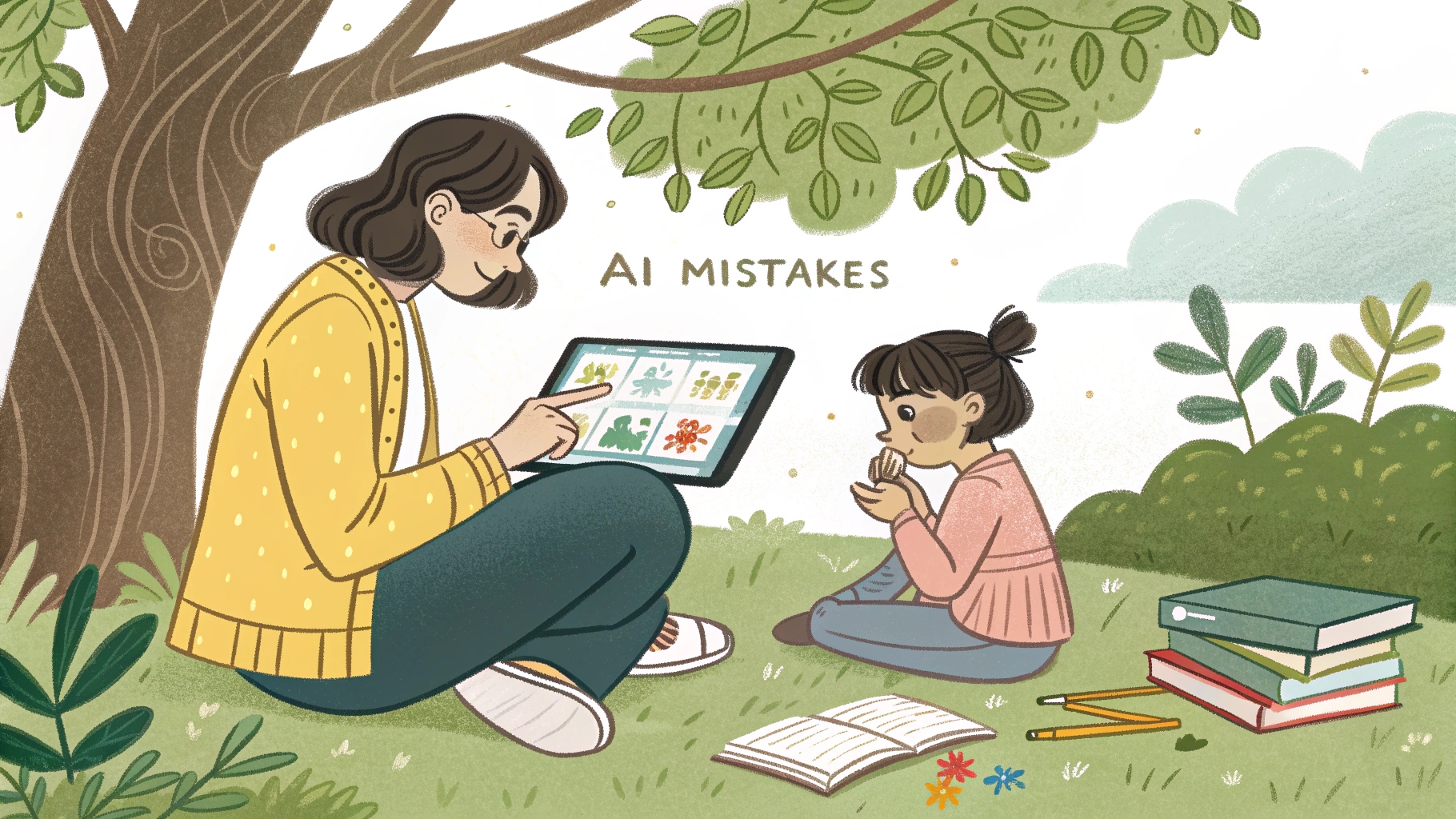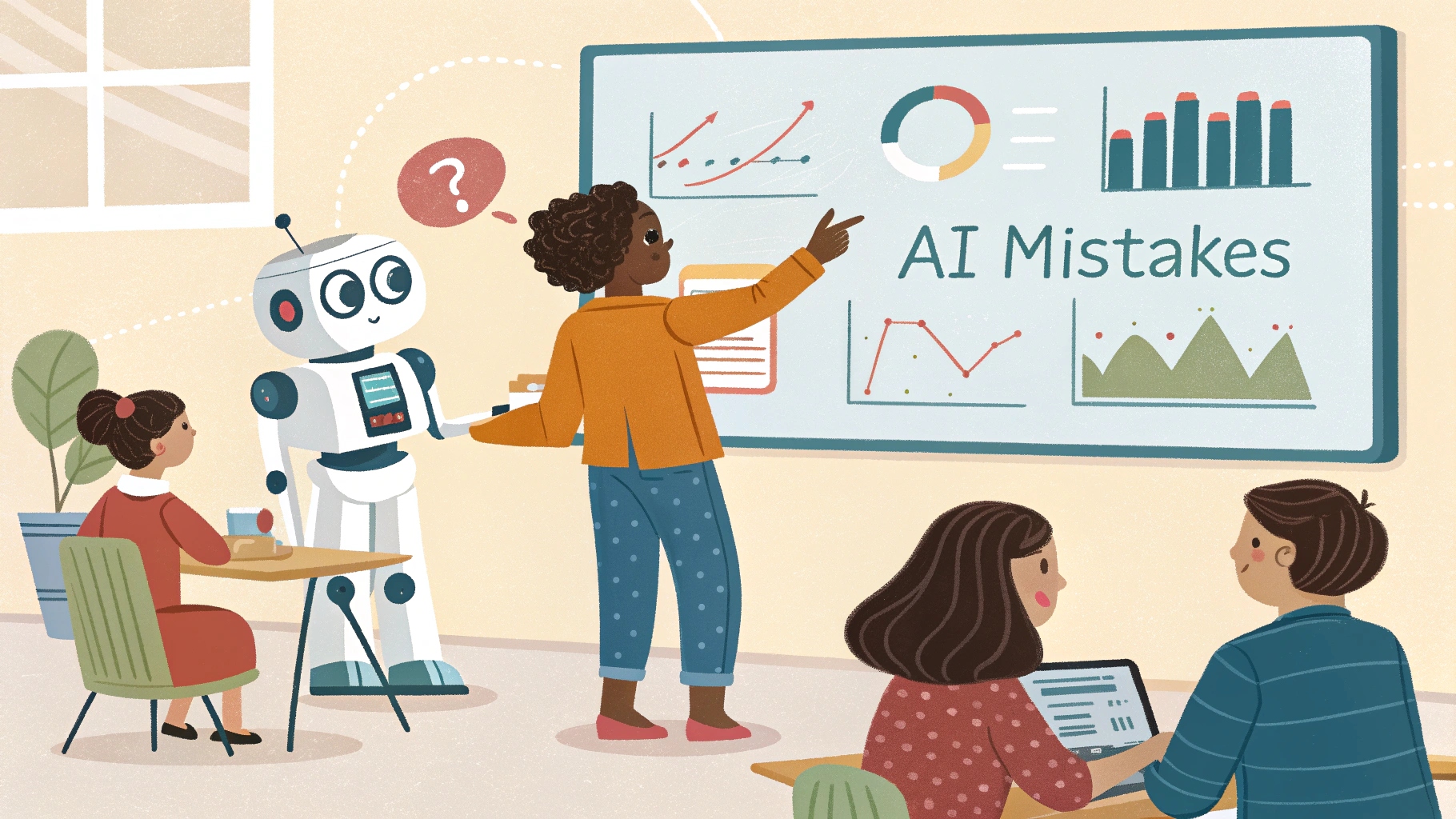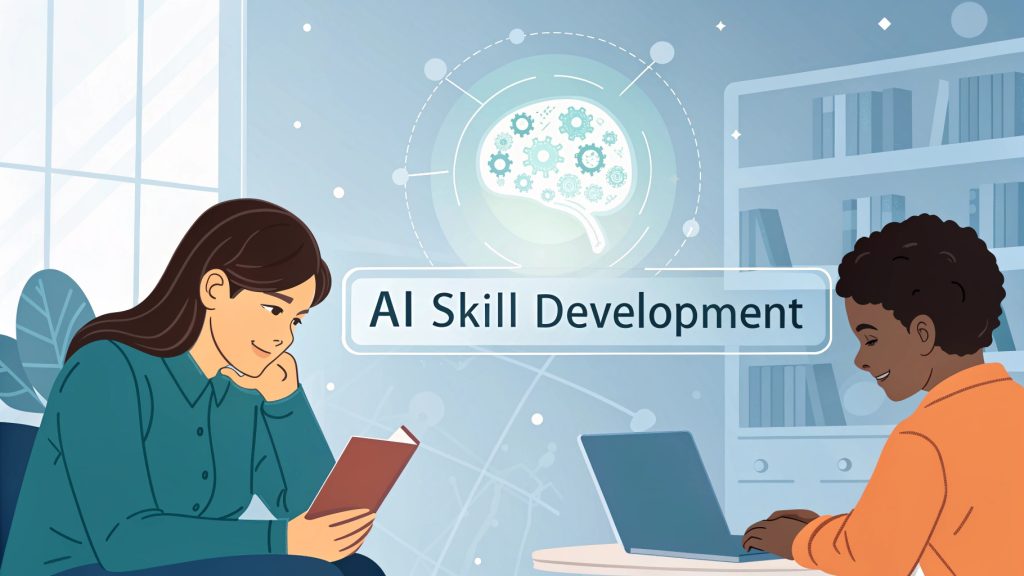
Is AI really transforming education or are we misusing it? As AI tools flood the classroom, many educators and parents fall into avoidable traps. This post uncovers the top 5 mistakes in AI-assisted learning, from overreliance to ethical oversights. Whether you’re a teacher, parent, or edtech enthusiast, you’ll learn how to make smarter, safer choices with AI in education. Ready to rethink AI in learning?
Mistake 1 : Overreliance on AI without Human oversight
Can AI truly replace the empathy and intuition of a human teacher? While AI is reshaping assisted learning, relying on it without human oversight can backfire. In this section, discover why educators still play a vital role and how blending human connection with AI tools leads to smarter, more supportive learning environments. Read on to see what many get wrong about AI’s role in education.
Why human educators still matter in assisted learning and AI
Imagine a robot teacher that never sleeps, never gets tired, and always has the answers. Sounds perfect, right? But here’s the catch, AI can’t truly understand emotions, context, or human struggles. One of the biggest mistakes in assisted learning with AI is assuming it can replace teachers entirely.
AI should be seen as a powerful teaching assistant not the teacher.
Human educators bring empathy, motivation, and real-life experience to the learning process. These qualities help students feel supported, especially when they’re struggling. AI might know what question you got wrong, but a teacher knows why you’re frustrated and how to boost your confidence.
Balancing automation and empathy in learning environments
So, what’s the right balance? Think of it like driving with cruise control, the AI keeps things moving smoothly, but the human still has the steering wheel. Teachers can use AI tools to track progress, suggest personalized content, or automate grading, while they focus on mentorship and human connection.
- Use AI for repetitive tasks like grading quizzes.
- Let teachers handle class discussions and emotional check-ins.
- Combine human feedback with AI analytics for a full-picture view.
Assisted learning with AI works best when it’s a team effort between human and machine.
Mistake 2 : Ignoring data privacy and ethical responsibilities
What happens to your child’s data when they use an AI learning app? With great power comes great responsibility especially when it comes to data privacy in AI-assisted learning. This section exposes the hidden risks behind student data collection and offers smart, ethical guidelines to protect learners. Don’t skip this if you care about security in education.
Understanding data collection in AI-assisted platforms
Every time you use an AI learning tool, it collects data like what you study, how long you take on tasks, and what mistakes you make. This data helps AI customize your learning path. But here’s the issue: where is that data going? Who’s watching it? And is it even safe?
Some platforms might share or sell data without clear permission. Others might store sensitive information without proper security. That’s why educators and parents need to ask tough questions before trusting an AI tool.
| AI tool features | What to check for |
|---|---|
| Data Collection | Does it explain what data is gathered and why? |
| Storage & Security | Is data encrypted and stored securely? |
| User Consent | Do students (or parents) have to give permission? |
How to ensure ethical implementation in assisted learning with AI
Schools and organizations should have clear rules about AI use. This includes:
- Checking privacy policies before using any platform.
- Choosing tools that don’t sell or misuse student data.
- Giving students and parents the option to opt out.
Being ethical isn’t just about following the law, it’s about protecting learners and earning their trust.

Mistake 3 : Using the wrong tools for the wrong learning objectives
Would you teach swimming with a textbook? Choosing the wrong AI tool can derail your entire learning strategy. This section breaks down how to match educational goals with the right AI-assisted platforms based on age, skills, and learning style. Avoid this common mistake and ensure your tech actually supports your students’ growth.
The importance of alignment between AI tools and educational goals
Let’s say you’re trying to learn how to swim, but someone gives you a book instead of a pool. That’s exactly what happens when AI tools don’t match the learning goals.
The most advanced AI system in the world won’t help if it’s not designed for the task at hand.
Some AI tools are built for math drills, others for writing support, and some for creative collaboration. Using a math-focused AI to teach essay writing? That’s not going to end well. Educators must choose tools that align with both the subject and the students’ learning style.
Even the best AI tools can fall short if used incorrectly. Our main resource, Mastering Assisted Learning with AI, lays the groundwork. Then, see how tools like Quillbot, Scalenut, and Hypotenuse AI may lead to common pitfalls and how to avoid them. You can also compare and learn about personalization approaches.
Evaluating AI tools for age, skill level, and learning style
Every learner is different. Some are visual, others are hands-on. Here’s how to pick the right AI-assisted tool:
- Age-Appropriate : Tools for 7th graders should look and feel different from those for college students.
- Skill-Appropriate : Beginner learners need more guided steps than advanced users.
- Style-Appropriate : If a student learns better through games, choose an AI that includes gamification features.
Start by identifying the goal (e.g., improve reading comprehension), then match it with the AI tool built to meet that need.
Mistake 4 : Lack of personalization in AI-assisted learning
Does your “personalized” AI learning tool treat every student the same? Many systems promise customization but deliver cookie-cutter content. Here, we explore how real-time personalization works and how to identify AI tools that truly adapt to each learner’s pace and needs. Get the full picture on why personalization isn’t optional in modern learning.
How standardized AI models undermine true personalization
AI promises “personalized learning,” but not all systems deliver on that. Some just push everyone through the same lessons at the same pace. That’s not personalized, that’s mass-produced learning with a shiny label.
Students learn at different speeds and face unique challenges. A true AI-assisted learning model adjusts in real time, based on how each learner performs, struggles, and improves.
Tuning AI systems to individual learning paths and pacing
To get personalization right, AI tools should do more than just grade answers. They need to :
- Track how long a student takes on a question.
- Notice which concepts are causing confusion.
- Adapt the next lesson based on performance trends.
Imagine AI as a GPS for learning. If you take a wrong turn, it recalculates your route, not punish you for it. Tools like this make learning feel less like a test and more like a journey you’re in control of.
Mistake 5 : Neglecting ongoing evaluation and feedback loops
Is your AI learning system evolving with your students or falling behind? Education is dynamic, and static systems can’t keep up. This section dives into how continuous feedback, real-time analytics, and regular updates make AI-assisted learning more effective and engaging. Discover how to create a feedback loop that keeps learners growing.
Why static systems fail in dynamic learning environments
Learning isn’t one-and-done. It’s dynamic, just like growing a plant. You water it, adjust sunlight, and check for bugs. But when schools set up AI systems and never tweak them, they miss out on helping students grow better.
Without regular evaluations, AI tools might keep recommending outdated material or ignore a student’s recent progress. Learning environments should evolve with the learner not stay stuck in the past.
To avoid mistakes with specific AI tools, check our guides on Quillbot and Scalenut.
Using real-time analytics to refine AI learning strategies
One of the coolest parts of AI is its ability to track live data. Teachers can see who’s falling behind, who’s acing the material, and what parts of the curriculum need reworking.
Here’s how to use that information wisely :
- Review performance dashboards weekly or bi-weekly.
- Adjust content delivery based on trends.
- Let students see their own progress so they stay motivated.
Think of it like a video game: players (students) should get instant feedback and updated quests based on how they perform. That’s how learning becomes engaging and effective.
AI can revolutionize education, but only if we avoid the most common pitfalls. From balancing tech with human touch to ensuring ethical data use and real-time adaptation, assisted learning with AI demands thoughtful execution. Want to dig deeper? Explore our comprehensive guide on assisted learning with AI. Share your experiences, spread the word, and help build a smarter, safer AI-powered future in education.


